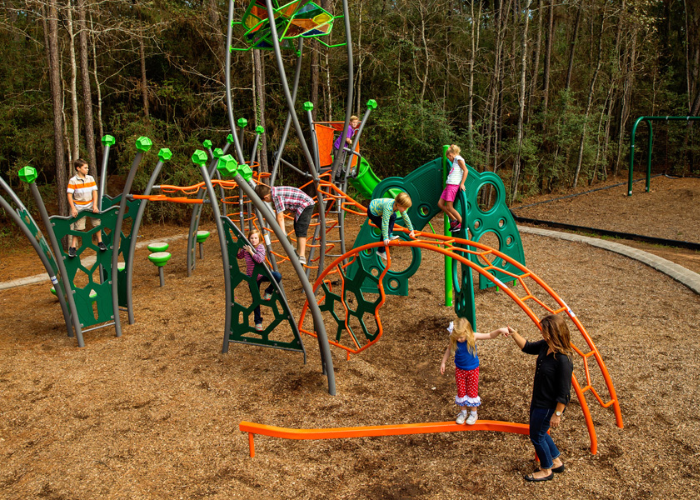Playgrounds are a fun and important part of kids’ physical and mental development. But, they aren’t without their risks.
Children need supervision to ensure that they are using equipment safely. This may include steering them away from equipment that is beyond their skill level or helping them avoid injuries like running into, landing on or hitting each other.
1. Safety Rating
In 2010, Risk Management & Facility Services began a new effort to maintain district playgrounds. They tasked one person with assessing the physical condition of all playgrounds, including surfacing and equipment.
The surfacing on 메이저사이트 순위 is tested to determine its critical fall height (CFH). This is the maximum height someone could land on the surface without serious injury. The test involves dropping a head-like form onto the surfacing material from different heights.
It’s important that the surfacing under and around all equipment is safety-tested, cushioned and deep enough to prevent injuries. In addition, the surfacing should be free of debris that kids can trip on, like rocks and sticks.
Roughhousing, such as pushing, shoving and playing fights, is dangerous for kids on the playground. They can lose control, fall or hit their heads, and may hurt others. Supervision is essential, and adults should remind children to be careful. Also, they should make sure the kids aren’t crowding each other.
2. Design
Playground equipment must be designed to allow for children of all ages and abilities to safely use it. Many playground injuries are caused by kids misusing equipment, and they need to be given a chance to learn how to use it properly.
Proper attenuating surfaces are also vital to a safe playground. These surfaces reduce the risk of head trauma that is the leading cause of emergency room playground related injuries. They also help protect against the majority of playground falls, which is why all Superior Recreational Products equipment meets IPEMA’s minimum CFH.
It’s also important to provide space between equipment and avoid cramming too much in one area, which can create tripping hazards. It’s also important to design playgrounds that encourage challenging play, which has been shown to increase kids’ cognitive and physical skills.
3. Safety Surfacing
Children fall down a lot on playground equipment, and depending where they land they can suffer injuries ranging from minor to severe. The right playground surface absorbs the impact of those falls and helps prevent them from becoming worse.
The ASTM F1292 safety standard sets maximum thresholds of 200 G’s and 1000 HIC for any playground surfacing material to meet in order to be considered compliant. This allows for much better performance of surfacing materials than was previously available in the industry.
There are several types of surfacing materials that can be used on playgrounds, including loose-fill and unitary surfaces like sand, mulch, wood chips, and rubber matting. Each type has its own set of advantages and disadvantages. But there are also other factors that must be taken into consideration, such as maintenance. If a surfacing material is not maintained properly, it will eventually degrade and no longer meet safety standards. That’s why it is important to choose a high quality surfacing material in the first place.
4. Maintenance
Playgrounds are fun and important places for kids to play and socialize but they can also be dangerous. Supervision, age-appropriate equipment, safety surfacing and proper maintenance are all essential to playground safety.
The most common playground injuries are related to falls from the equipment onto the ground. It is recommended that all platforms higher than 30 inches above the ground intended for school-aged children have guardrails or barriers.
Entanglement is another major source of injury on playgrounds. It can occur when clothing, rope or fabric becomes tangled on equipment. Hooded sweatshirts are the most frequent culprits, but any loose clothing can become entrapment hazards.
To minimize this risk, regularly inspect surfacing for protruding fasteners and sharp points or edges. Ensure that the ideal surfacing depth is maintained in high-use areas of the playground like under swings and slide exits. Patch holes, cracks and tears in surfacing as needed. Check to see that equipment is dry after rainstorms.








Leave a Comment